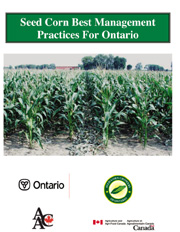
Features
Agronomy
Plant Breeding
Towards low input and organic CWRS wheat lines
Breeders are screening wheats for resistance to weed and nutrient stresses.
January 23, 2008 By Carolyn King
 |
| Researchers are looking for promising breeding materials for new lines of low input and organic wheats. Photo Courtesy of Todd Reid. |
A new project is taking the first steps in breeding wheat varieties for organic and low input production. Funded by the Western Grains Research Foundation (WGRF), the results from this three year project could be relevant to any prairie wheat grower.
Two wheat breeders, Dr. Dean Spaner of the University of Alberta and Dr. Pierre Hucl of the University of Saskatchewan, are leading the project. Using field trials, they hope to identify promising materials that could be used in a long-term breeding program to develop new lines of Canada Western Red Spring (CWRS) wheat.
Spaner and Hucl are obtaining germplasm (breeding material) from the International Maize and Wheat Improvement Center (CIMMYT) in Mexico. They will also be testing historic and current wheat cultivars, including most Canadian germplasm and some US germplasm.
The field trial locations are at various farm sites in Saskatchewan and Alberta, along with some organic land at the University of Alberta’s research farm in Edmonton. All of the sites have low phosphorus soils and/or high weed populations.
Spaner explains, “Martin Entz’s research group at the University of Manitoba has done some research on organic farms in the prairies, in Manitoba and… in the Dakotas. They found that organic grain soils seem to be low in phosphorus. Much of my research deals with really competitive environments because the organic land we have at the University of Alberta is very weedy.”
In 2006, the first year of the project, the researchers multiplied breeding materials in preparation for field trials for two years, and they also grew one trial on an organic farm in Alberta.
This WGRF project is one of several that Spaner and his graduate students are involved with that could help answer some fundamental questions about wheat breeding for organic and low input systems.
 |
| Field trials are testing the performance of a wide range of historic and current wheat cultivars on land under organic management. Photo Courtesy Of Todd Reid. |
Funding partners of these other studies include the Natural Sciences and Engineering Research Council of Canada, the Organic Agriculture Centre of Canada and the Canadian Wheat Board.
Spaner says, “In Canada, we are lagging behind much of the world in organic and low input research. In Europe, they have breeding programs specifically for low input and organic environments. We don’t really have that and we don’t know whether, in fact, that would be useful in Canada.
“In some of our research we’ve found that the new cultivars, for example, Superb which is taking over most of the CWRS prairie acreage and CDC Go, out of Pierre’s breeding program, are two varieties that have semi-dwarf genes, they yield well no matter where you go, whether it’s conventional, organic or low input production.
But in organic environments, they tend not to suppress weeds as much, which might lead to weed buildup or might not be a problem. So the jury is still out.”
Although scientists have various theories about the performance of wheat varieties in organic systems, Spaner explains that many of the theories have not been fully tested. “People say things like, ‘Wheat varieties that have been bred in the last 10 or 20 years in conventional systems won’t yield as high under organic systems’. Well, we don’t really know that and there are a lot of breeders who will tell you that it’s probably not true because we select for the best lines, and the best lines are going to yield well no matter what. But we are finding in our research that it is a little fuzzier than that and there’s no black and white.”
He notes, “I have a PhD student who is trying to determine whether the end result will be different if you breed in organic environments. Another one of my PhD students, who is just finishing, looked at whether varieties behaved differently competitively under organic or conventional systems, and whether there would be an ideal crop type for organic systems.”
Spaner says, “Similarly, there’s a hypothesis that some varieties tend to uptake mycorrhizae and therefore perform better than others, and there’s another hypothesis that organic soils are going to have a better level of mycorrhizal activity in the soil, so we have a project looking at that.” (Mycorrhizae are specialized fungi that require a host plant to survive, so they reach well beyond the plant’s roots to obtain water and nutrients for the plant.)
Whether or not organic and low input systems need special wheat varieties, the WGRF screening project will likely yield useful information. Any wheat grower who wants to reduce fertilizer and herbicide costs will be interested in knowing how different varieties respond to nutrient deficiency and weed competition stresses.
“We can understand more about how crops behave under stress environments by doing work like this screening project and that is going to be interesting both scientifically and practically,” Spaner says. He adds, “Looking for genetic resistance for abiotic stresses – resistance to low phosphorus, resistance to acid soils, resistance to salt in the soil, resistance to drought: that’s one of the greatest challenges of the next 50 years in agriculture.” -30-